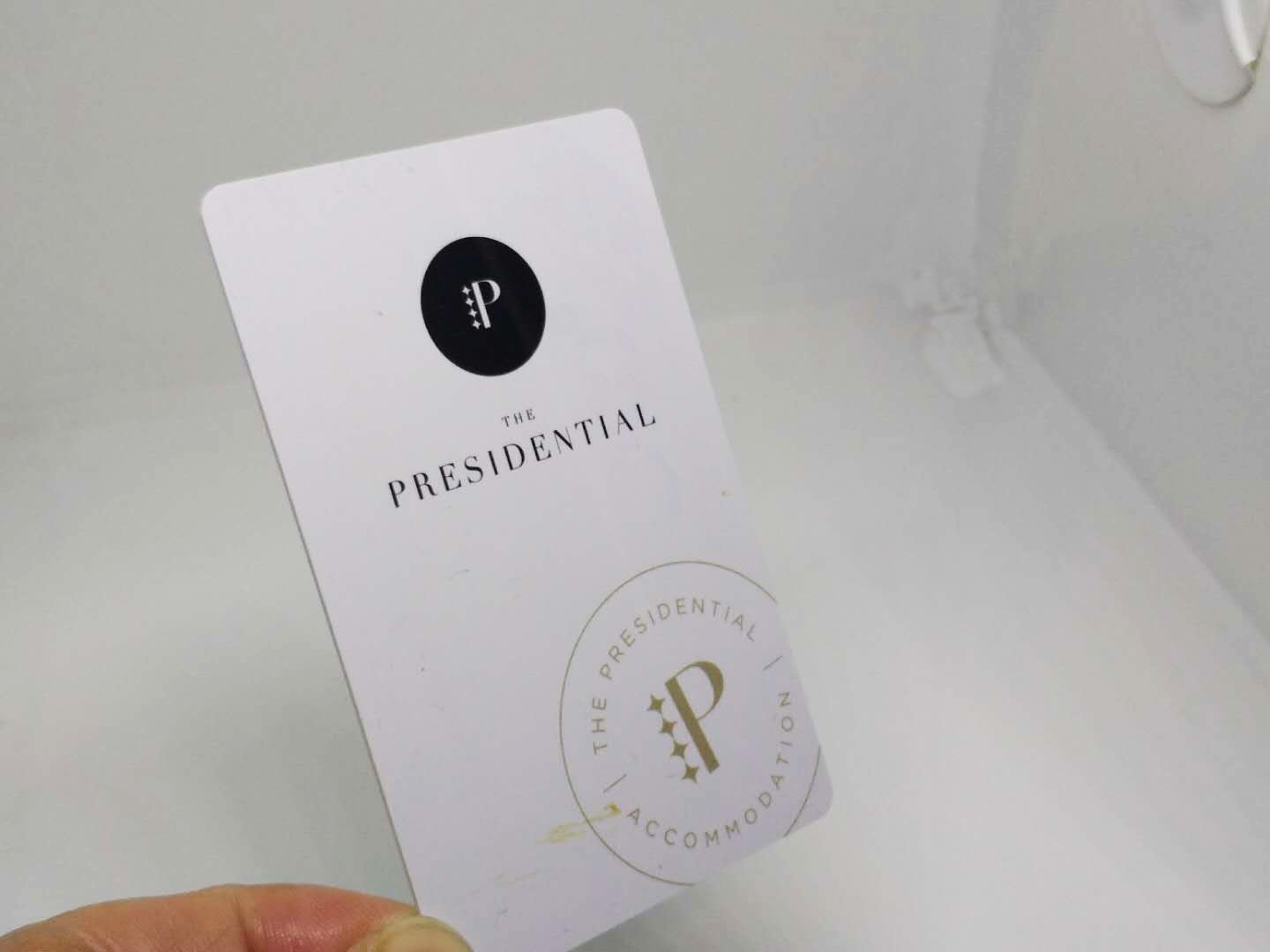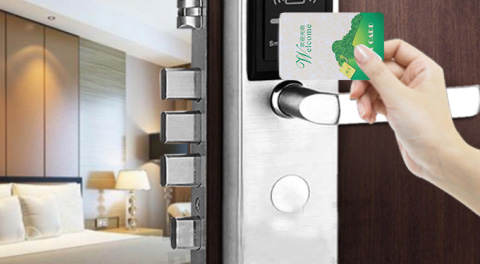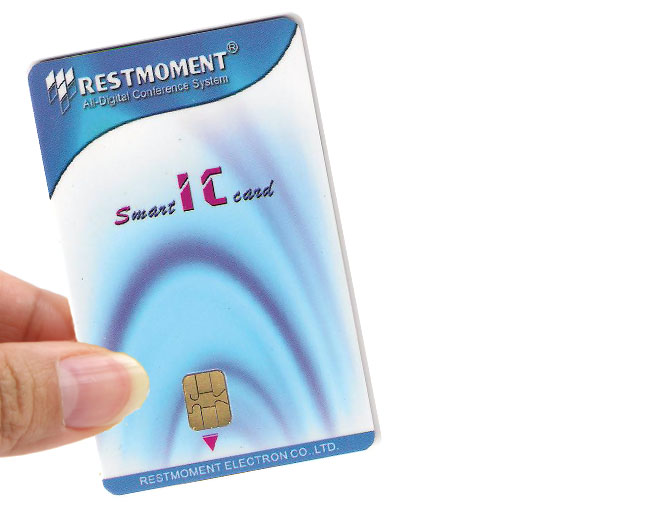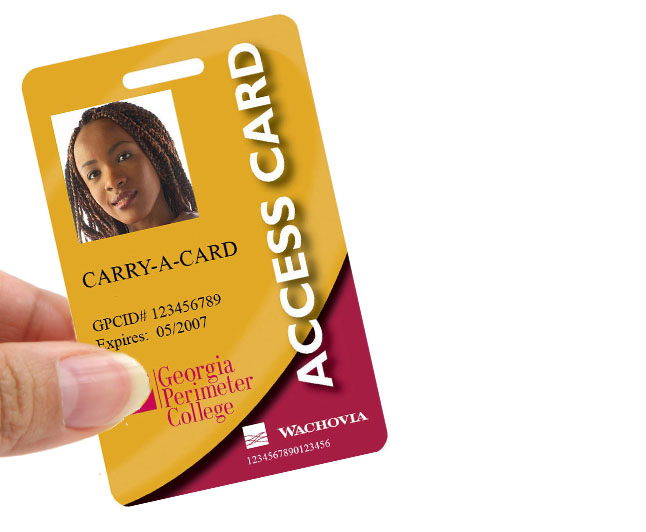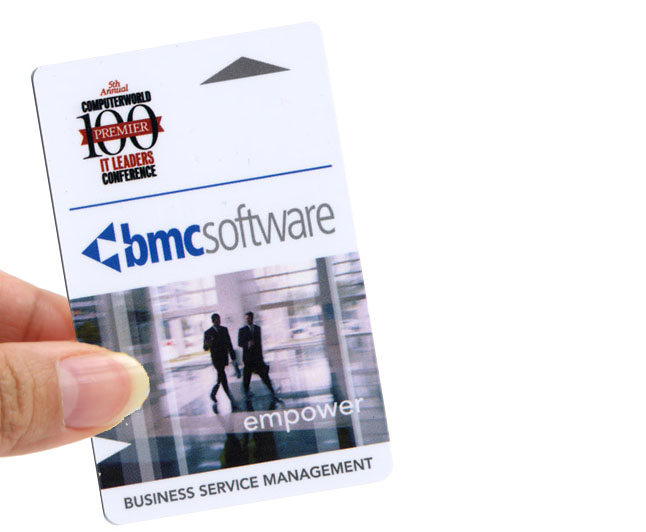7Daysprint specializes in providing solutions for RFID cards to the hotel industry.
- Compatiable with mos hotel door lock systems
- Adel, Kaba, Salto, Saflok, Betech and Onity
- Guaranteed to open doors time after time
RFID stands for radio-frequency identification. RFID cards are used for applications where tracking or identifying personnel is important or where access control is required. Various RFID frequency bands are utilized in cards today, including 125 kHz low frequency proximity, 13.56 MHz high frequency smart card and 860-960 MHz ultra-high frequency (UHF).
Proximity cards and smart cards are often referred to simply as "RFID cards." The type of RFID frequency band used depends on the application, factoring in security level, read range and data transfer speed requirements.
125 kHz (LF) - Common proximity card format used for employee badges and door and gate access control.
13.56 MHz (HF) - Higher security format used for credit cards and employee badges for physical and logical access control.
860-960 MHz (UHF) - UHF cards have a read range of up to 50 feet used for identification, access control and transaction processes.
Adel system is one of famous hotel door lock system. There are 3 versions for Adel system, A90, A93 and FH.
Chip: Adel 2KB chip
VC is one of most used hotel system around the world. We can provide both old and new VC guest room key cards and staff/master cards for hotels.
VC Mifare Classic 1K S50 is widely used on VC systems.
Chip: Mifare Classic 1K, Mifare Ultraligth EV1, Mifare PLUS, Mifare Classic 4K (staff card)
Salto lock system is widely used in the world. And we can provide Salto 1K and Salto 4K key cards.
Chip: Mifare Classic S50
provide customized printing hotel key cards for Betech locks. Encrypted betech key card is one of our main products.
Chip: 13.56Mhz, Mifare 1K (HICO and LOCO onity key card provided too)
provide customized printing hotel key cards for Onity locks. RFID onity key cards, HICO(2750 OE) onity key cards and LOCO(300 OE ) onity key cards.
Chip: 13.56Mhz, Mifare 1K (HICO and LOCO onity key card provided too)
KABA lock are used in many hotels in the world. KABA hotel key cards are our main products too.
Chip: 13.56Mhz, Mifare 1K
Saflok hotel key
Chip: 13.56Mhz, Mifare 1K
1. How do RFID keycards work?
Passive cards have three components sealed in the plastic: An antenna (mostly coil or wire), a capacitor and an integrated circuit (IC), which contains the user’s ID number. The RFID reader on the wall has an antenna, which continuously emits a short range radio frequency (RF) field.
When you hold the card on the reader, the card absorbs the energy from the RF field generated by the reader—the technical term is that it's an induced current. This energy creates (induces) a current powering the integrated circuit, which in turn makes the chip emit its ID number.
The reader sends the ID back to the server closet or IT room, where the main access control system panel usually resides. The sent ID signals that this user wants to unlock the door. The format the reader communicates in is often the Wiegand protocol.
2. What MIFARE products are available?
Varying levels of security, memory capacity and functionality determine which one of the four MIFARE products are chosen, namely MIFARE Ultralight, MIFARE Classic, MIFARE Plus and MIFARE DESFire. Let’s take a look at each in turn;
MIFARE Ultralight
The MIFARE Ultralight has only 512 bits of memory (i.e. 64 bytes), without cryptographic security. The memory is provided in 16 pages of 4 bytes. Cards based on these chips are so inexpensive that they are often used for disposable tickets for events such as the Football World Cup. It provides only basic security features such as one-time-programmable (OTP) bits and a write-lock feature to prevent re-writing of memory pages but does not include cryptography as applied in other MIFARE based cards. This has since been superseded by MIFARE Ultralight EV1, meaning Version 1. This newer EV1 version is completely compatible with all MIFARE Ultralight systems and contains a digital signature to ensure the chip is a genuine NXP product.
MIFARE Classic
The MIFARE Classic card is fundamentally just a memory storage device, where the memory is divided into segments and blocks with simple security mechanisms for access control. They are ASIC-based and have limited computational power. Thanks to their reliability and low cost, these cards are widely used for electronic wallet, access control, corporate ID cards, transportation or stadium ticketing.The MIFARE Classic 1K, also known as 1k Mifare cards, offers 1,024 bytes of data storage, split into 16 sectors; each sector is protected by two different keys, called A and B. MIFARE Classic has also evolved, is now known as Mifare Classic EV1 1K and represents the highest evolution of the MIFARE Classic product family succeeding all previous versions.
MIFARE Plus
MIFARE Plus brings benchmark AES security to contactless smart card applications. It offers the benefit of a seamless upgrade of existing MIFARE Classic installations and services with minimum effort. This results in the possibility to issue cards, being fully compatible with MIFARE Classic, into existing system environments prior to infrastructure security upgrades.
MIFARE DESFire
The MIFARE DESFire product family consists of MIFARE DESFire EV1 and MIFARE DESFire EV2 products and is ideally suited for solution developers and system operators building reliable, interoperable and scalable contactless smart card solutions. It targets multi-application smart card solutions in identity, access control, loyalty and micropayment applications
3.What card stock and equipment do you use?
Once the reader recognizes the access credential, it then communicates with the door lock. The smart access control reader will be wired to an electric lock on your door and it will send a signal to the lock to start an unlock event. With a good system, the whole process takes less than a second.RFID cards are most widely used in commercial office spaces. These cards (sometimes referred to as 'tags' or 'fobs') can be classified by the range they communicate (low, high or ultra high) and the way the communication happens with the reader (active or passive).
RFID stands for “radio frequency identification,” and that’s the essential technology behind them. They emit identification information in the radio frequency range and the reader will pick up those signals and authenticate them.
Your RFID reader can operate on different frequency ranges:
Low Frequency (LF) RFID operates around 30 KHz to 300 KHz and has a maximum range of 10cm. Your conventional office access card usually utilizes LF range. Prox keys are generally at 125kHz.
High Frequency (HF) RFID operates around 3 MHz to 30 MHz and provide distances between 10cm and 1 meter. Examples of access cards that use HF RFID are NFC cards, which includes smart cards like MIFARE. NFC cards are a subset of high frequency RFID cards. All NFC cards operate at exactly 13.56 MHz, and this uniformity of communication allows NFC card manufacturers to make the communication more secure and more efficient
Ultra High Frequency (UHF) RFID ranges between 300 MHz and 3 GHz and reads up to 12 meters. They are typically used for parking solutions or similar wide-range applications
Now that we covered the different types of RFID frequency, there is another parameter to consider. RFID can be distinguished into two broad categories: Passive or active tags (or cards).
Active RFID tags have their own transmitter (and power source). Active RFID tags are used for cargo, machine or vehicle tracking. Passive RFID tags do not require a battery. The reader on the wall sends a signal to the tag. That signal is used to power the tag and reflect the energy back to the reader. These proximity cards are low frequency 125kHz and fall under the category of passive RFID cards, given that they have no means of getting power.
4.How does the Reader communicate with the door lock?
Passive cards have three components sealed in the plastic: An antenna (mostly coil or wire), a capacitor and an integrated circuit (IC), which contains the user’s ID number. The RFID reader on the wall has an antenna, which continuously emits a short range radio frequency (RF) field.
When you hold the card on the reader, the card absorbs the energy from the RF field generated by the reader—the technical term is that it's an induced current. This energy creates (induces) a current powering the integrated circuit, which in turn makes the chip emit its ID number.
The reader sends the ID back to the server closet or IT room, where the main access control system panel usually resides. The sent ID signals that this user wants to unlock the door. The format the reader communicates in is often the Wiegand protocol.


